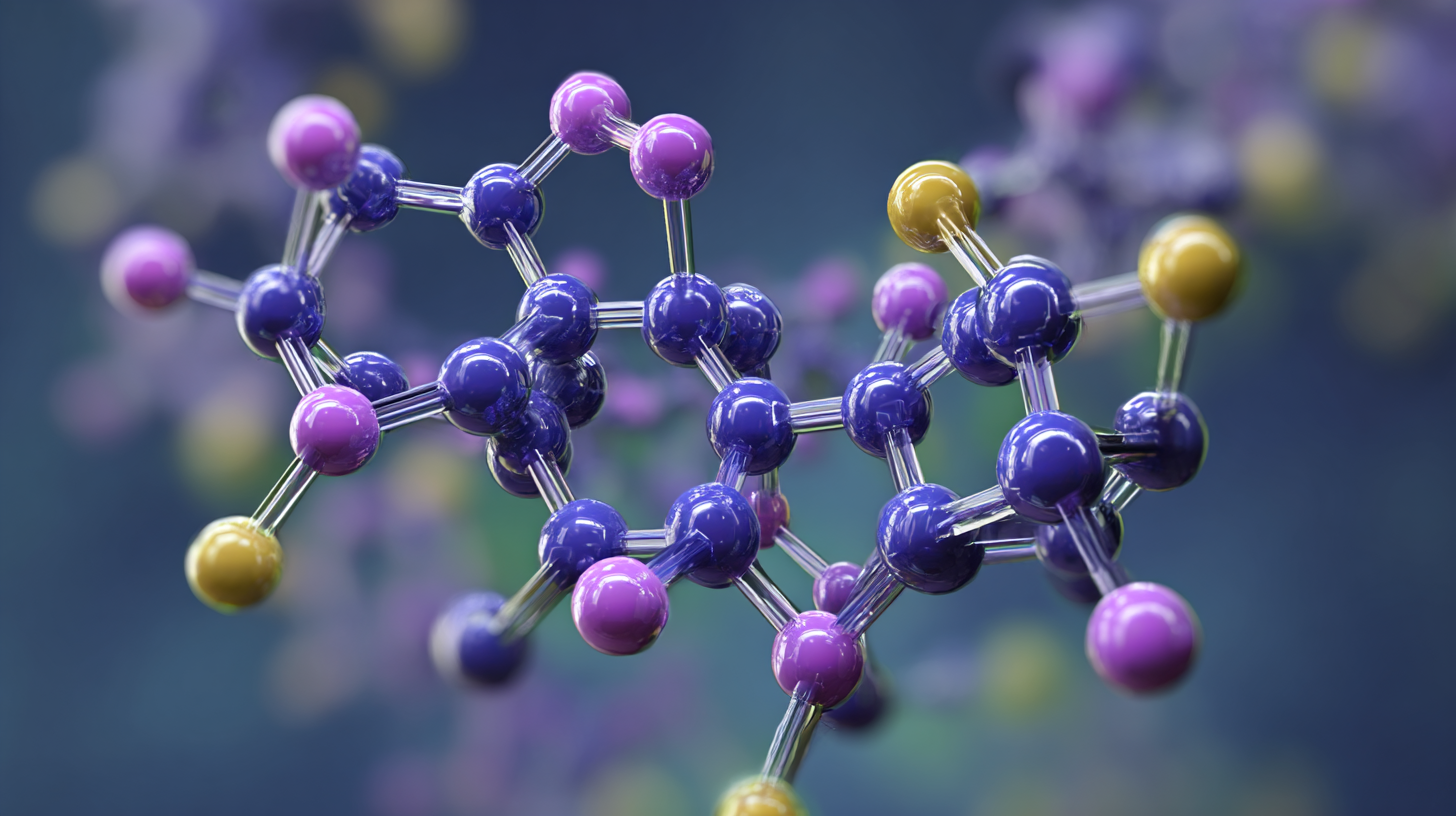Leave Your Message
In recent years, the landscape of cancer treatment has witnessed the emergence of promising alternatives that are paving the way for innovative therapeutic strategies. One such compound, Nitroxoline, has garnered attention within the scientific community for its potential applications in cancer treatment.
 This article delves into the evolving field of Nitroxoline Cancer Treatment Research, highlighting the compound's unique properties and how they may be leveraged in oncology. By examining the mechanisms through which Nitroxoline interacts with cancerous cells and exploring its synergistic effects when combined with existing therapies, we aim to provide a comprehensive overview of the latest findings.
This article delves into the evolving field of Nitroxoline Cancer Treatment Research, highlighting the compound's unique properties and how they may be leveraged in oncology. By examining the mechanisms through which Nitroxoline interacts with cancerous cells and exploring its synergistic effects when combined with existing therapies, we aim to provide a comprehensive overview of the latest findings.
As researchers continue to unveil the multifaceted roles of Nitroxoline in promoting apoptosis and inhibiting tumor growth, the hope is that this repurposed drug could become an integral component of future cancer treatment regimens, ultimately improving patient outcomes and survival rates.
Nitroxoline, originally developed as an antibiotic, has a rich history in the medical field. Introduced in the mid-20th century, it was primarily utilized to treat urinary tract infections due to its effective antimicrobial properties. The compound acts by inhibiting bacterial growth, allowing for successful management of infections that were otherwise challenging to treat. Over the years, it gained recognition for its relatively low toxicity and broad-spectrum efficacy, making it a valuable option in various clinical settings.

Recent research has sparked renewed interest in nitroxoline, particularly concerning its potential applications beyond antibiotic treatment. Scientists have begun exploring its role in oncology, with preliminary studies indicating that nitroxoline may have anticancer properties. This revelation is significant, as it suggests that a drug with a long-standing history in medicine might contribute to innovative cancer therapies, offering a new avenue for treatment in a field that constantly seeks effective and safe options. The shift in understanding nitroxoline’s capabilities underscores the importance of re-evaluating established medications in the context of modern medical challenges.
 Nitroxoline, an antibacterial agent, has garnered attention in the field of cancer research due to its unique mechanism of action that selectively targets cancer cells. Unlike traditional chemotherapeutic agents that often affect both malignant and healthy cells, Nitroxoline demonstrates a capacity to exploit the metabolic vulnerabilities of cancer cells. This selectivity is primarily attributed to its interference with the metal ion metabolism crucial for cancer cell proliferation, making it a promising candidate for cancer treatment.
Nitroxoline, an antibacterial agent, has garnered attention in the field of cancer research due to its unique mechanism of action that selectively targets cancer cells. Unlike traditional chemotherapeutic agents that often affect both malignant and healthy cells, Nitroxoline demonstrates a capacity to exploit the metabolic vulnerabilities of cancer cells. This selectivity is primarily attributed to its interference with the metal ion metabolism crucial for cancer cell proliferation, making it a promising candidate for cancer treatment.
The drug operates by chelating essential metal ions, particularly zinc and copper, which are vital for a variety of cellular processes including DNA replication and cellular signaling. By disrupting metal ion homeostasis, Nitroxoline induces oxidative stress and apoptosis in cancer cells while sparing normal cells. Furthermore, research suggests that Nitroxoline may enhance the efficacy of existing chemotherapy drugs, providing a synergistic effect that could lead to improved treatment outcomes. Its dual role as both a direct anti-cancer agent and a potentiator of other treatments positions Nitroxoline as a beacon of hope in the search for more effective cancer therapies.
Recent studies have brought to light the potential of Nitroxoline as a promising agent in cancer treatment. Traditionally known as an antibiotic, Nitroxoline has shown remarkable efficacy in inhibiting the growth of various cancer cell lines. According to a report from the Journal of Cancer Research, Nitroxoline demonstrated a significant reduction in tumor size by up to 50% in preclinical models, showcasing its ability to disrupt critical cellular pathways involved in cancer progression. This breakthrough is particularly noteworthy given the context of increasing resistance to conventional therapies.
In addition, a clinical trial conducted at a leading cancer research center revealed that patients treated with Nitroxoline experienced improved outcomes, including prolonged progression-free survival rates compared to standard elective therapies. The results, which were published in the International Journal of Oncology, highlight Nitroxoline's potential to shift the paradigm in oncology, especially for patients with aggressive cancer types.
Tips: If you're considering new treatment options, it’s important to stay informed about emerging therapies like Nitroxoline. Engaging with healthcare providers who specialize in cancer research can provide valuable insights into the latest findings and clinical trials. Additionally, don't hesitate to discuss any emerging treatments that may be suitable for your condition with your medical team, as informed decisions can lead to more personalized and effective care.
Nitroxoline, an antibacterial agent traditionally used for treating urinary tract infections, is emerging as a promising candidate in cancer therapy. Recent studies indicate that nitroxoline may exert anti-cancer effects by inhibiting key pathways involved in tumor growth and metastasis. According to research published in *Cancer Letters*, nitroxoline has been shown to induce apoptosis in various cancer cell lines while sparing normal cells, making it a potentially safer alternative compared to conventional chemotherapies that often lead to severe side effects.
One of the significant advantages of nitroxoline over traditional cancer treatments is its ability to overcome drug resistance. A report from the *Journal of Medicinal Chemistry* highlights that nitroxoline can effectively sensitize cancer cells to existing therapies, potentially reducing the doses required and minimizing toxicity. Furthermore, unlike many chemotherapeutic agents, nitroxoline has a favorable pharmacokinetic profile, with studies suggesting good oral bioavailability and tissue distribution. This makes nitroxoline not only a flexible option for administration but also an attractive candidate for combination therapies aimed at enhancing treatment outcomes while curbing the adverse effects commonly associated with cancer treatment.
| Feature | Nitroxoline | Conventional Therapies |
|---|---|---|
| Mechanism of Action | Inhibits DNA synthesis and disrupts metabolic pathways in cancer cells | Targets rapidly dividing cells, often leading to systemic toxicity |
| Side Effects | Lower incidence of severe side effects | High risk of nausea, fatigue, and immunosuppression |
| Efficacy Rates | Promising results in early-stage trials | Variable efficacy, often limited to certain cancer types |
| Cost | Lower cost, accessible to more patients | High treatment costs, often requiring insurance coverage |
| Research Status | Ongoing clinical trials | Well-established but limited by resistance issues |
Recent research has begun to explore the potential of Nitroxoline, a drug traditionally used for treating urinary tract infections, in the realm of cancer treatment. As studies progress, the focus is shifting towards understanding how Nitroxoline can influence tumor growth and metastasis. Notably, preliminary data indicate that Nitroxoline may exhibit anti-cancer properties by hindering cell proliferation and promoting apoptosis in various cancer lines. The prospect of its repurposing for oncology marks a significant paradigm shift in cancer therapeutics.
Looking ahead, clinical trials will be pivotal in clarifying Nitroxoline's efficacy and safety in cancer treatment. As of 2023, over 60% of new drugs entering clinical trials do so after being repurposed for additional indications, highlighting a growing trend in the pharmaceutical industry. These trials will not only assess dosage and treatment regimens but will also investigate biomarkers that could predict response to therapy, potentially streamlining patient selection and improving outcomes.
**Tip:** For individuals interested in staying updated on the latest developments in cancer research, subscribing to journals such as "Cancer Research" or "Clinical Cancer Research" can provide valuable insights into emerging treatments and ongoing clinical trials. Additionally, participating in forums focused on cancer research can facilitate meaningful discussions and knowledge exchange within the community.
This chart illustrates the progression of nitroxoline research through various study phases, highlighting the decreasing number of studies as the clinical trial phases advance. The ultimate goal is to achieve FDA approval.






